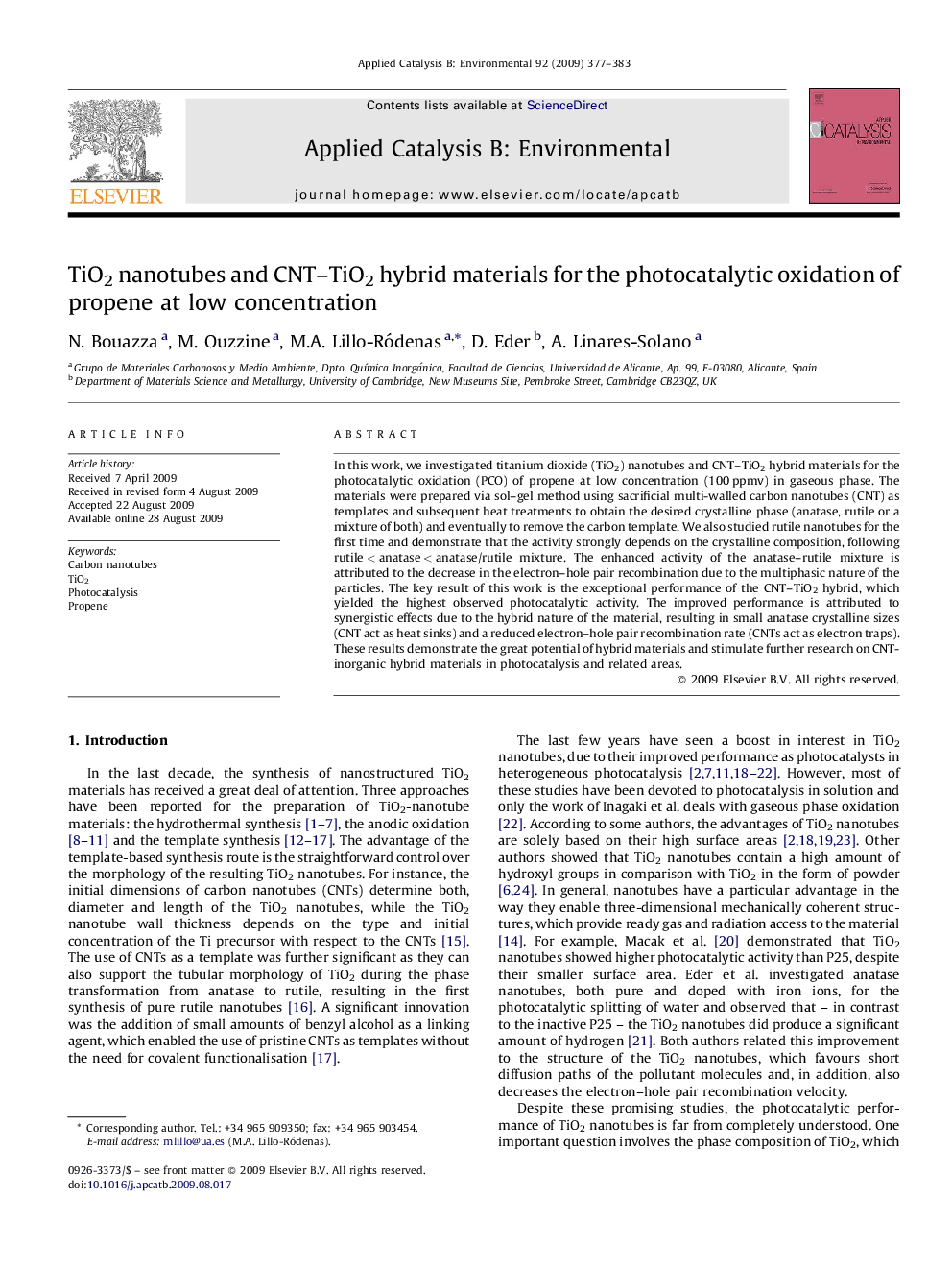| Article ID | Journal | Published Year | Pages | File Type |
|---|---|---|---|---|
| 47575 | Applied Catalysis B: Environmental | 2009 | 7 Pages |
In this work, we investigated titanium dioxide (TiO2) nanotubes and CNT–TiO2 hybrid materials for the photocatalytic oxidation (PCO) of propene at low concentration (100 ppmv) in gaseous phase. The materials were prepared via sol–gel method using sacrificial multi-walled carbon nanotubes (CNT) as templates and subsequent heat treatments to obtain the desired crystalline phase (anatase, rutile or a mixture of both) and eventually to remove the carbon template. We also studied rutile nanotubes for the first time and demonstrate that the activity strongly depends on the crystalline composition, following rutile < anatase < anatase/rutile mixture. The enhanced activity of the anatase–rutile mixture is attributed to the decrease in the electron–hole pair recombination due to the multiphasic nature of the particles. The key result of this work is the exceptional performance of the CNT–TiO2 hybrid, which yielded the highest observed photocatalytic activity. The improved performance is attributed to synergistic effects due to the hybrid nature of the material, resulting in small anatase crystalline sizes (CNT act as heat sinks) and a reduced electron–hole pair recombination rate (CNTs act as electron traps). These results demonstrate the great potential of hybrid materials and stimulate further research on CNT-inorganic hybrid materials in photocatalysis and related areas.
